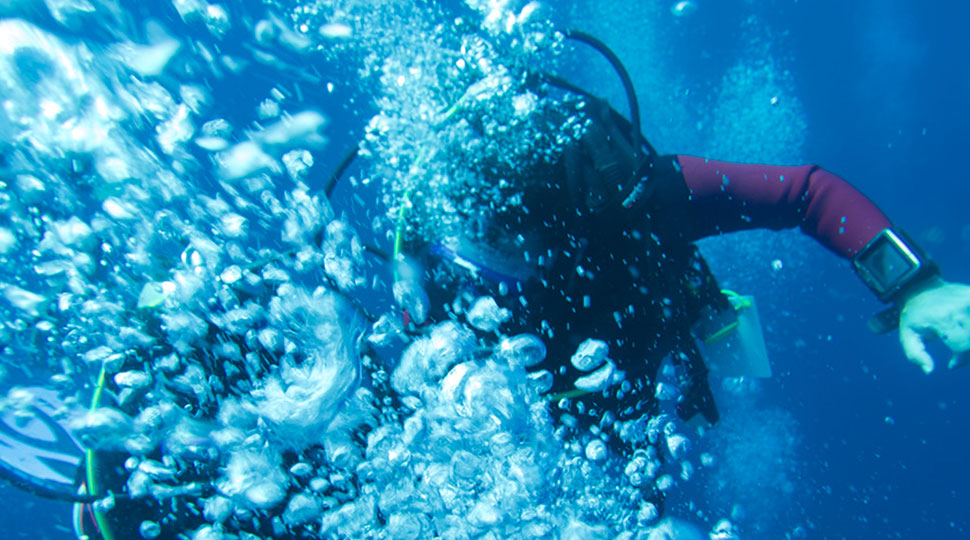As we embark on a new decade of marine research, it’s clear that AI-powered ocean exploration is revolutionizing the way scientists study our oceans. Gone are the days of tedious manual observations and limited data collection. With AI-powered ocean exploration, researchers can now analyze vast amounts of data in real-time, unlocking new insights into the complex relationships between species and their environments.
Imagine being able to track the migration patterns of endangered whales or monitor the growth of coral reefs with unprecedented accuracy. AI-powered ocean exploration makes this possible by leveraging cutting-edge technology to process large datasets and identify patterns that would be impossible for humans to detect on their own.
But what does this mean for marine research? For starters, it means that scientists can now focus on higher-level tasks, such as analyzing data and making new discoveries, rather than spending hours manually observing species.
This not only increases the efficiency of research but also allows researchers to tackle more complex questions and gain a deeper understanding of ocean ecosystems.
The MBARI Ocean Vision Project: A Beacon of Innovation
One of the most exciting examples of AI- Powered ocean exploration is the MBARI Ocean Vision project, an innovative initiative that’s pushing the boundaries of marine research.
By using artificial intelligence to identify jellyfish and whales in the ocean, researchers can quickly and accurately identify species, reducing the need for manual observation and increasing the scope of research.
The MBARI Ocean Vision project is a prime example of how AI powered ocean exploration can accelerate marine research. Traditional methods of identifying species often rely on human observers, which can be time-consuming and prone to error.
With AI-powered identification, researchers can analyze vast amounts of data in real-time, allowing them to make new discoveries and gain insights into ocean ecosystems.
But what makes the MBARI Ocean Vision project truly innovative is its ability to integrate multiple datasets and sensors to create a comprehensive picture of marine life. By combining underwater cameras and sensors with machine learning algorithms, researchers can identify species with unprecedented accuracy and track their movements in real-time.
This not only opens up new avenues for research but also has significant implications for conservation efforts. Through gaining a better understanding of the complex relationships between species and their environments, scientists can develop more effective strategies for protecting endangered species and preserving ocean ecosystems.
Accelerating Marine Research: Unlocking New Discoveries
The MBARI Ocean Vision project is a prime example of how AI powered ocean exploration can accelerate marine research, revolutionizing the way scientists study our oceans. Traditional methods of identifying species often rely on human observers, which can be time- consuming and prone to error. With AI-powered identification, researchers can analyze vast amounts of data in real-time, allowing them to make new discoveries and gain insights into ocean ecosystems.
But what does this mean for marine research?
For starters, it means that scientists can now focus on higher-level tasks, such as analyzing data and making new discoveries, rather than spending hours manually observing species. This not only increases the efficiency of research but also allows researchers to tackle more complex questions and gain a deeper understanding of ocean ecosystems.
By accelerating marine research, AI-powered ocean exploration has the potential to unlock new discoveries that could have significant implications for our understanding of the ocean and its inhabitants.
Enhancing Our Understanding of Ocean Ecosystems: Unlocking New Insights
But the potential applications of AI powered ocean exploration in marine research go far beyond just species identification. From analyzing large datasets, AI can help scientists understand complex relationships between species and their environments.
This can provide valuable insights into the impact of climate change on ocean ecosystems and inform conservation efforts.
Imagine being able to track the migration patterns of endangered whales or monitor the growth of coral reefs with unprecedented accuracy. AI powered ocean exploration makes this possible by leveraging cutting-edge technology to process large datasets and identify patterns that would be impossible for humans to detect on their own.
Challenges and Limitations of AI in Marine Research: Navigating the Complexities
Of course, there are challenges and limitations to using AI powered ocean exploration in marine research.
One of the biggest concerns is ensuring the quality of the data used to train AI algorithms. If the data is biased or incomplete, it can lead to inaccurate results and undermine the credibility of the research.
But what are some of the other challenges that researchers face when using AI in marine research? For starters, there’s the issue of data integration. With multiple datasets and sensors being used to collect information, it can be difficult to integrate all of this data into a single, cohesive picture.
This requires careful planning and coordination to ensure that the data is accurate and reliable.
Another challenge is ensuring that AI algorithms are properly trained and validated.
If an algorithm is not properly trained, it may produce inaccurate results or even worse, perpetuate biases in the data. This highlights the importance of human oversight and validation in the research process.

Additionally, there’s the issue of explainability. As AI becomes more prevalent in marine research, it’s essential that researchers can understand how the algorithms are making decisions and why.
This requires transparency and interpretability in the AI models used.
Finally, there’s the concern about job displacement. With AI taking over some tasks, will human researchers be replaced?
While AI is designed to augment human capabilities, not replace them, it’s essential that we address these concerns and ensure that AI is used in a way that benefits both humans and the ocean ecosystem.
The Safety Stop
Despite these challenges, the potential benefits of AI-powered ocean exploration are significant.
By accelerating marine research and providing new insights into ocean ecosystems, AI has the power to revolutionize our understanding of the ocean and its inhabitants.
As we move forward with this technology, it’s important to remember that AI is a tool, not a replacement for human researchers.








